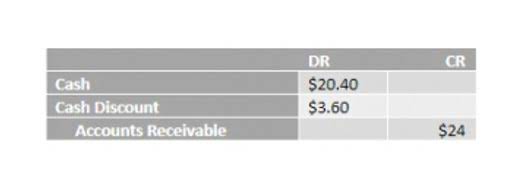Your cart is currently empty!
Contra Account: Definition, Types & Examples

If contra assets appear in the credit column, record contra liabilities on side. A contra account is a general ledger account that offsets the balance of a corresponding account with which it’s paired. If you debit the contra account, ensure that you offset the related account with a credit balance. In essence, contra accounts allow you to report your firm’s gross and net amounts. These accounts also ensure that you follow the matching principle in accounting, which states that you record expenses in the same period you incur them. For the purpose of presentation on primary financial statements, we are often concerned only with the net figure of two similar classes/balances which we determine by subtracting one account from the another.
- There are two major methods of determining what should be booked into a contra account.
- This helps the firms to evaluate the book value of their assets and liabilities.
- The balance sheet would show the piece of equipment at its historical cost, then subtract the accumulated depreciation to reflect the accurate value of the asset.
- Contra equity is a general ledger account with a debit balance that reduces the normal credit balance of a standard equity account to present the net value of equity in a company’s financial statements.
- The key example of a contra equity account is Treasury stock, which represents the amount paid to buyback stock.
Is a Contra Balance Negative or Positive?
However, the details for contra accounts usually exist on the notes to the financial statements. However, these can cause a reduction in other balances on the statement. The contra asset account, accumulated depreciation, is always a credit balance.
Accumulated depreciation
These include accumulated depreciation, accumulated amortization, allowance for receivables, obsolete inventory, and discount on notes receivables. However, the “Allowance for Doubtful Accounts” (or “Allowance for Uncollectible Accounts”) is a contra account related to the concept of bad debts. This contra-asset account reduces the accounts receivable balance on the balance sheet to its net realizable value. The Allowance for Doubtful Accounts carries a credit balance that reduces the total amount of accounts receivable to show the amount that the company expects to collect.
Allowance for doubtful accounts

An asset account which is expected to have a credit balance (which is contrary to the normal debit balance of an asset account). For example, the contra asset account Allowance for Doubtful Accounts is related to Accounts Receivable. The contra asset account Accumulated contra account Depreciation is related to a constructed asset(s), and the contra asset account Accumulated Depletion is related to natural resources. Examples include accumulated depreciation, sales returns and allowances, and contra equity accounts like treasury stock.

As mentioned, a company will usually have debit balances in its asset accounts. While accumulated depreciation is the most common contra asset account, the following also may apply, depending on the company. A less common example of a contra asset account is Discount on Notes Receivable.

This helps the firms to evaluate the book value of their assets and liabilities. Those who are struggling with recording contra accounts may benefit from utilizing some of the best accounting software currently available. As evident from the table below, each contra account has a parent account whose normal balance is often exactly opposite of the normal balance of the relevant contra account. Contra accounts help maintain the accuracy of financial records, provide transparency in reporting, and allow for proper tracking and analysis of specific transactions or events.
Accountants use contra accounts rather than reduce the value of the original account directly to keep financial accounting records clean. If a contra account is not used, it can be difficult to determine historical costs, which can make tax preparation more difficult and time-consuming. A normal asset has a debit balance, while a contra asset sits against this to show the net balance of both assets on your financial statement. Are you looking for a way to account for accumulated depreciation, returned merchandise, or damaged inventory?
What is Contra Account?
- Each account in a general ledger will be designated debit or credit accounts depending on whether they’re categorized as assets, liabilities, revenues or expenses.
- Consider a business that offers an early payment discount to its customers, cutting their invoiced total by 3% if they pay within 1 week of invoicing.
- A normal asset has a debit balance, while a contra asset sits against this to show the net balance of both assets on your financial statement.
- Osman started his career as an investment banking analyst at Thomas Weisel Partners where he spent just over two years before moving into a growth equity investing role at Scale Venture Partners, focused on technology.
- By recording reductions in a separate account, companies can get better insights into their actual accounts.
- However, they will still appear on the notes to the financial statements with necessary disclosures.
Allowance for receivables is an account that companies maintain to record possible bad debts. However, there are some prevalent contra-asset accounts that may exist for all companies. You’ll continue to use the contra asset account until the equipment has been completely depreciated, retired, or sold. For example, if the balance of accumulated depreciation increases from $20,000 to $50,000, this means that the depreciation expense amounts to $30,000, which will be listed in the income statement.
Allowance for Doubtful Accounts
For the past 52 years, Harold Averkamp (CPA, MBA) has worked as an accounting supervisor, manager, consultant, university instructor, and innovator in teaching accounting online. My Accounting Course is a world-class educational resource developed by experts to simplify accounting, finance, & investment analysis topics, so students and professionals can learn and propel their careers. Shaun Conrad is a Certified Public Accountant and CPA exam expert with a passion for teaching.
